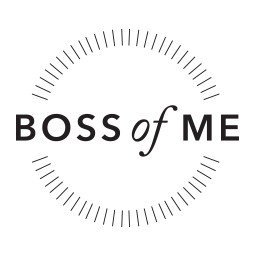Jacky Tan is a professional writer, brand strategist and speaker. He is also the author of “Social M – How Your Start-Up Can Take on the Big Boys Today”. Rated by Twitterholic as one of the top 40 influential Twitterers in Singapore, Jacky currently owns one of the top marketing blogs in Singapore www.marketingstrategyexpert.wordpress.com.
1. How long have you been doing social media marketing?
I started in 2009 on a small scale with Twitter. During that time, Twitter was very new in Singapore so I managed to get a first mover advantage and leverage on Twitter. With my experience, I started doing more social media marketing and branding for companies, two years later in 2011.
2. Why is social media so crucial for authors?
For authors like me who do not have a huge budget for marketing, making use of social media to build my profile and my book is very important. Social media allows me to get targeted readers without spending a lot of money on advertising. It is much more cost effective than traditional media such as print, TV or radio. Social media also cuts across all geographical boundaries and allows me to showcase my book to a worldwide audience. It allows me to create my little “cult” of followers who like what I have written online. For example, a Facebook page for an author is like an opt-in marketing page. Prospects will like your page first and then slowly become your fans; after that, I can update them on a regular basis so as to build my brand credibility.
The last thing, and perhaps the most crucial of all, is that social media is a very strong word-of-mouth marketing tool. It is better than getting on the front page of a mainstream newspaper which only lasts for one or two days. On social media, if people like your brand, they will share it virally to their peers in a matter of seconds and your influence will continue to spread as long as your content can be found online.
3. You’ve recently launched your book, Social ‘M’, can you share what you did to promote it?
Since most people visit social networking sites such as Facebook, Twitter, YouTube or LinkedIn, I knew I had to create a strong presence there. One of the things that I did was to create a Facebook page for my blog. From there, I made a "Buy My Book" tab and placed it prominently on my Facebook page. For my Facebook Page content, I focused on subtle marketing. That means I educate people about simple marketing tips, showing them creative advertising and also interesting social media facts.
I also used Facebook advertising to target people living in Singapore that are interested in marketing and business entrepreneurship. This way, my Facebook followers are highly targeted prospects that will most likely buy my book. It is important that you don’t post promotions to sell your books on Facebook. It will never work. We have to create interesting content that our prospects will love to read and share. To date, my Facebook campaign that started in Oct 18 last year, has already garnered a following of 3651 likes. By consistently building good interesting content on Facebook, my little “cult” of followers will increase as well.
I also used blogging and articles contribution to business related websites to increase my brand profile as a writer and a business strategist. I have a marketing blog that has regular views on a daily basis. By contributing to online content whether in the form of blog posts or other online media, authors like me can have the chance to become thought leaders in the online world.
4. Why did you choose a traditional publisher instead of going indie (self-publishing)?
I wanted to have something tangible and see how the professional publishers work. To me, having a printed book is more credible. As I did not have a budget to self-publish a printed book, I sought the professional and traditional publisher to publish and market my book. The publisher was able to take me by the hand every step of the way, from reviewing my manuscript to getting my book to the bookstores. This is quite crucial for newbie authors who may be unfamiliar with the publishing terrain.
5. Do you know of any successful online book campaigns? What did they do?
I have heard success stories about struggling authors who started out with poor book sales at the stores then they gave away their content on Amazon Kindle for less than US$9.95, resulting in a very good income in a matter of weeks. One example is Joe Konrath who made about USD$100,000 in three weeks on Amazon Kindle. I am not as fortunate as Joe Konrath, my first Amazon Kindle book didn’t go so well. But the key is to keep on trying until it is right.
Whether you are with a traditional publisher or self-publishing, an author’s marketing efforts does not stop after his book is published and distributed in the bookstores. You need to continue to build your brand profile in the industry so that more people will get to know you and buy your books.
6. With so many social media outlets – Twitter, Facebook, Instagram, etc, it can be overwhelming for a newbie. In your opinion, which delivers the best results?
Each social media outlet has its unique group of users, but we do not have use all them. You should select the channels according to who your targeted readers are. For example:
· For young-adult fiction books, you can consider using Twitter and Instagram. This is where most teenagers are hanging out.
· If you are targeting readers who are in the corporate or business world, then LinkedIn or Facebook is good.
· If you write about fashion and beauty, Pinterest, YouTube and Instagram are great avenues to share your content.
It is important to test the market. Sometimes what works for one author, may not work for the other. Moreover, some social media outlets can work in one country but may not work in another country. So always test it out. If the strategy does not work, move on to another. If the strategy works, continue to focus on your efforts and make it better!
7. How can we promote our book without looking like we’re “selling” which will put people off after a while?
You are right. Selling on social media will put people off. Instead, give value to your prospective readers with interesting content and build their trust from there. The more content you share to educate the readers, the more they will perceive you as the expert and authority of your topic.
8. Besides traditional media, are there any online media we should target and how do we go about doing that?
Before you do that, make sure your books are available online so that people worldwide can buy your books. Then, you can tap on Goodreads, a book recommendation website for people to review, give a rating and recommend books to their friends. This is similar to TripAdvisor which is about hotel reviews.
For children fiction authors, you can build a website around the characters of your storybook, thus making your characters come alive in the online world. Imagination is boundless; by building a content rich website about your story characters, it can help generate buzz for your book and you! Encourage book fans to build fanpages or even websites for your characters. The Harry Potter fans are a big example.
For non-fiction books, it is still all about building your brand credibility and profile so that people will get to know about you and your book. Another method for non-fiction authors is to find a niche consumer market on social media such as Facebook and then share expert opinions and put relevant and interesting visuals to interest readers. Leverage on the traffic of other business media or related media websites and direct the traffic to your book or author profile page.
9. What about presentation? Should we dress up our press release or just send a PDF copy via email?
It is pretty difficult to just send a summary of our books to the press nowadays. People in the media are always looking for newsworthy content. So, in order for traditional media outlets to write about you, you must contribute to their content. I have been a frequent contributor to Singapore Business Review because I feel that this is where my potential clients as well as readers of my books will be. This is because the majority of the people reading Singapore Business Review are my targeted consumer audience such as business executives, CEOs, PMEs and bosses. Two of my short articles were featured for the Editor’s pick at Singapore Business Review and received very good responses, views as well as sent new readers to my blog.
Instead of dressing up our press releases, I say we dress up our articles. Here are some tips:
· Firstly, we have to leave a positive impression with the audience. The not-so-good writers will usually write articles in a condescending manner. By doing so, the reader will find it hard to connect with the author. Good writers leave a positive impression while at the same time maintaining an authoritarian tone on the topic they write about.
· Secondly, it is about consistency. Not many people will usually read our blog in the initial stage, the important thing is to keep on writing. When I finished my 30th article, I was able to see an increase in my readership and some magazines also started to pick up my articles. When I finished my 50th article, I was invited by SMU to be a panelist speaker for one of their meetings. When I finished my 100th article, the number of companies that asked me to help them on their branding strategies increased twofold. So, just keep on writing and sharing your content!
· Thirdly, make more friends and let them know what you are doing. You never know who will refer you to somebody that will be a huge influence in your book career path someday.




